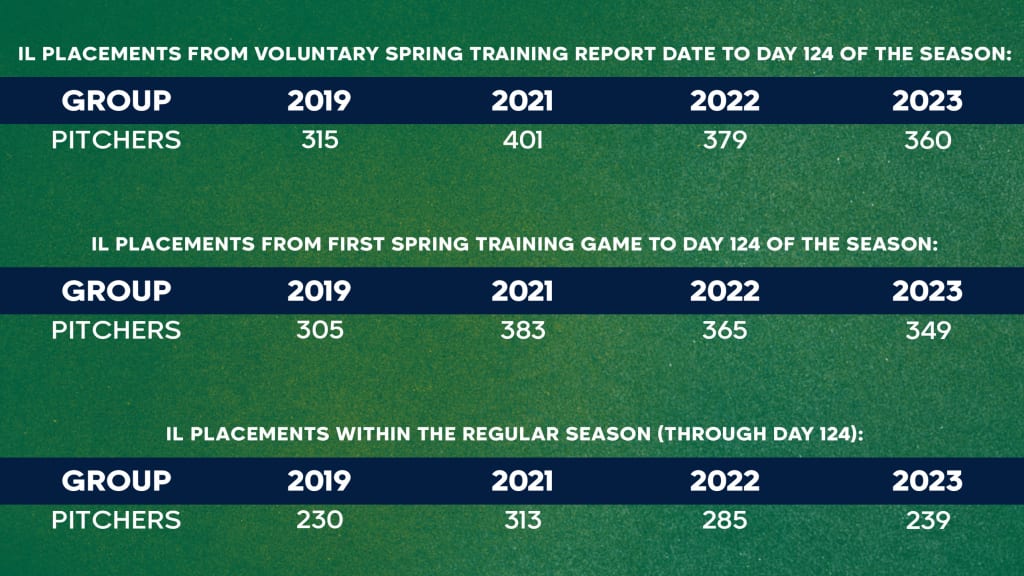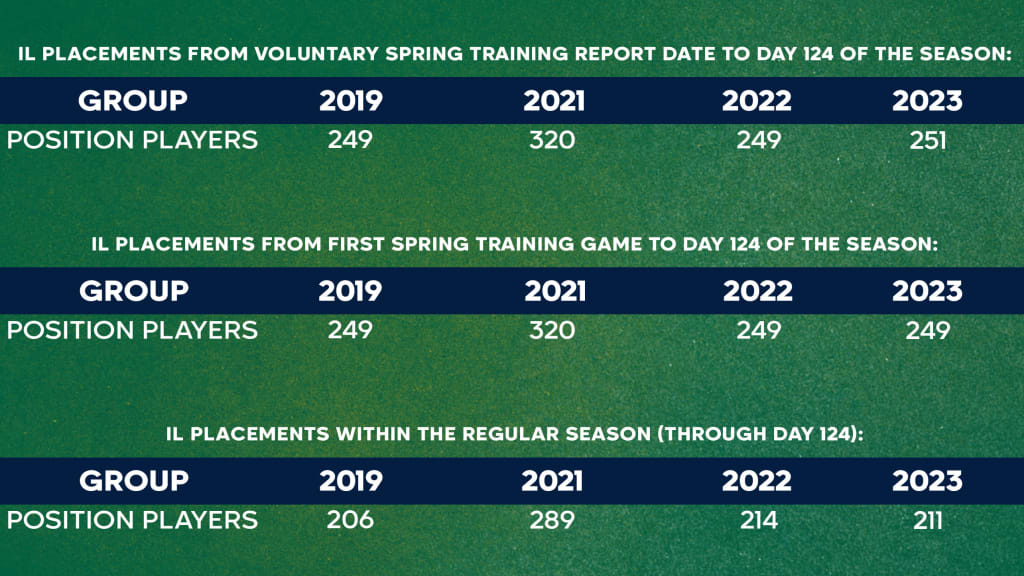Braves third baseman Austin Riley has played in all but four of his team’s games over the past three seasons. So he is as good an authority as any on what it takes to post up day after day, night after night in The Show.
Appearing in every single game in this 2023 season, with the advent of the pitch timer and other new rules, has been a different experience for Riley than years past.
“You’re talking about 30 to 40 minutes less on your feet,” Riley said, emphasizing the toll the infield shift would take on infielders who moved around a lot, especially third basemen. “I ran 45 miles last year, just on the shift alone [according to actual calculations by the Braves]. So cutting those two things down, the body feels good. I definitely think there's something to it.”
The appeal of the pitch timer is typically billed as “less.” As in, less standing around. Less dawdling. Less pacing around the mound. Less mindless fiddling with batting gloves. Less adjusting of athletic protectors.
Less dead time, and, ergo, less game time. The pitch timer has shaved 26 minutes off the average nine-inning game and been hailed as a hero for improving MLB’s pace of action.
But we’re here to tell you that the pitch timer has also brought “more.”
As in, more players playing more games. Reversing a trend toward “less” and getting us at least a little bit closer to a point in time when it was not so rare to see “everyday” players who really did play every day.
“Any time you're knocking 20, 30 minutes off every day of being out on the field,” said Riley’s Braves teammate Matt Olson, another true everyday player, “it's only going to help you as far as rest-and-recovery-wise.”
Before we discuss position players further, let’s first take a look at what impact, if any, the pitch timer has had on pitcher injuries.
You might remember this was a concern even among some pitch timer advocates going into the first season of a timed tempo in MLB, because the last thing this sport needs is more ailing arms.
Well, as we reported back in June, the data does not support the theory that an uptick in pace leads to an uptick in injuries. Actually, any way you slice it, pitching injury-list placements have actually decreased from 2022 to '23.

As you can see, pitching injury-list placements are still up from the last pre-pandemic season in 2019, but that’s more in keeping with a decades-long trend in which pitching injuries have trended upward. As the average velocity has increased in the sport, so, too, has the injury risk. Because past injuries are a great predictor of future injuries, the increased prevalence of pitchers who arrive to the professional ranks having already had Tommy John surgery contributes to this worrisome trend.
We know the correlation between increased velo and injury; there is no visible correlation between increased pace and injury.
The pitch timer’s possible impact on position players posting up is more interesting.
As far as the IL is concerned, the data tells us that position players are getting hurt at basically the same rate they did last year and in the last pre-pandemic season of 2019.

But while IL placements are flat, what’s notable, at this stage of the season, is an uptick in the number of players appearing in the vast majority of their team’s games.
Last year, there were 43 players who played in 95 or more of their team’s first 100 games.
This year, with teams having recently crossed that 100-game threshold, that number increased to 61.
Put another way, last year there were only 26 players to log 155-plus games played and only two -- Olson and Dansby Swanson -- who played all 162.
This year, as of this writing, there were 55 players on pace for at least 155 games played, which would be the most since 2016. And there were 11 (Ronald Acuña Jr., Freddie Freeman, Juan Soto, Marcus Semien, Francisco Lindor, Olson, Riley, Ozzie Albies, Eugenio Suárez, Anthony Volpe and Kyle Schwarber) who have appeared in every game thus far and could end up in all 162, which would be the most since 1964!
We don’t honestly expect that 162-game list to last, and perhaps this overall trend will change in the dog days of August and in the September home stretch.
But the numbers so far lend credence to the theory that shorter game times improve our chances of seeing the best players on the field more frequently.
“Legs feel more fresh,” Riley said. “The sixth, seventh, eighth inning, I think that's when you feel the difference of just being more locked in, a little bit more springy.”
-- MLB.com researcher David Adler and reporter Tim Stebbins contributed to this story.
